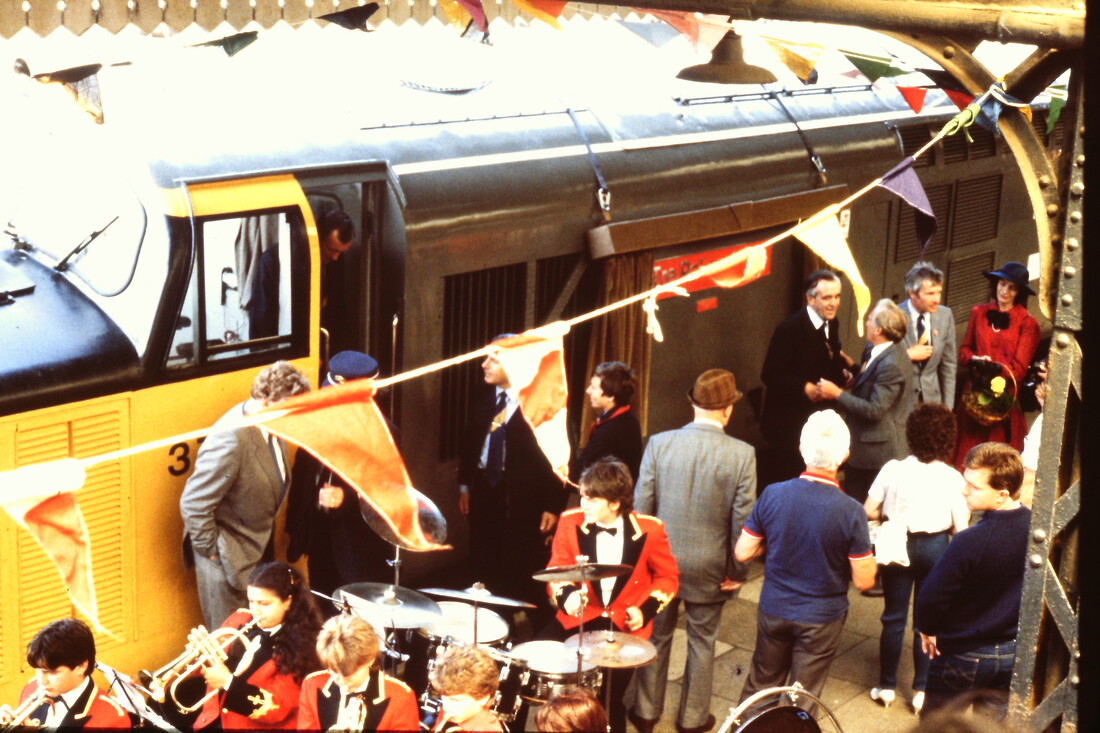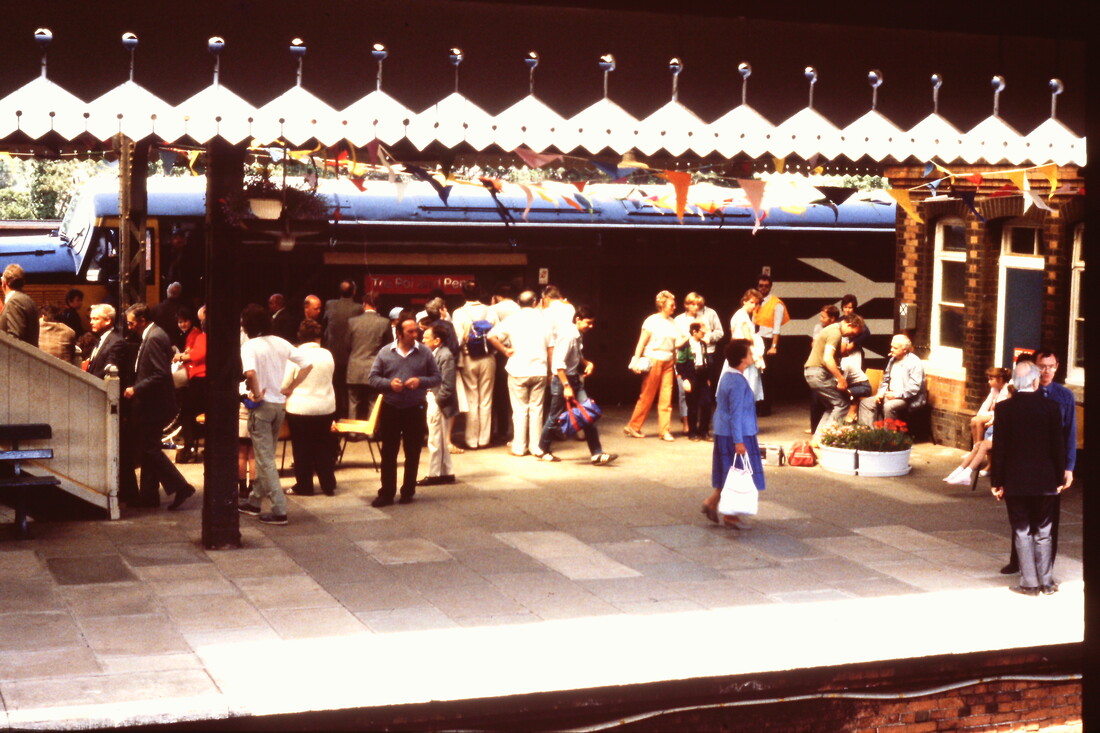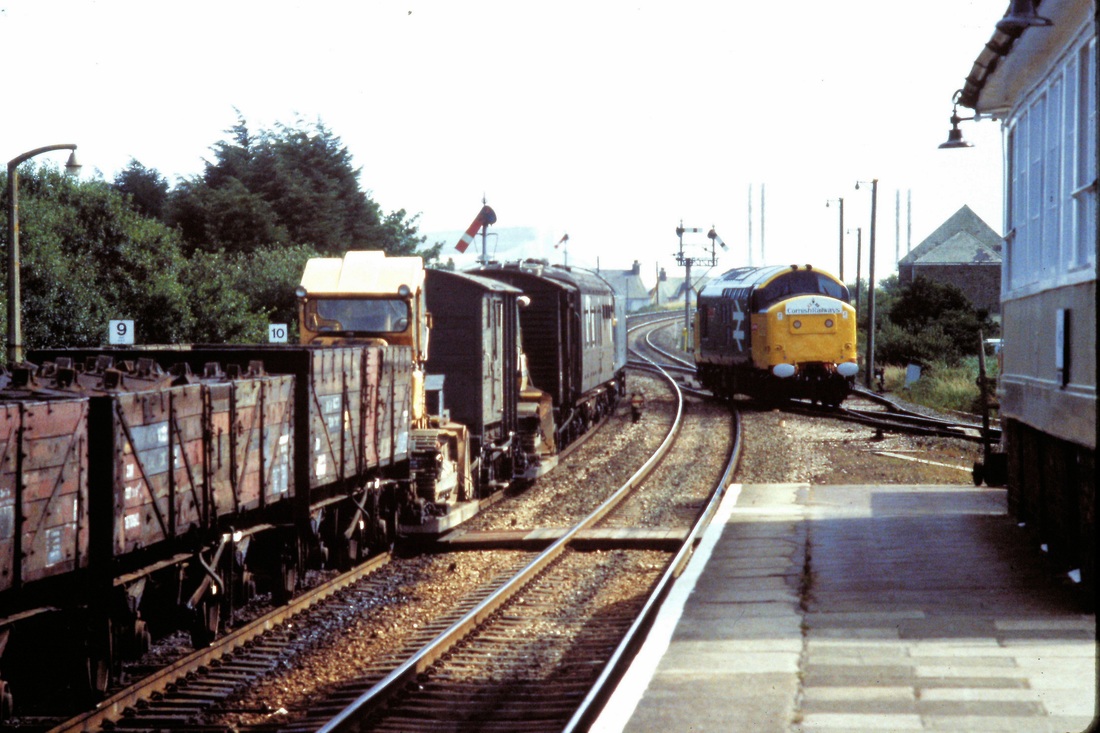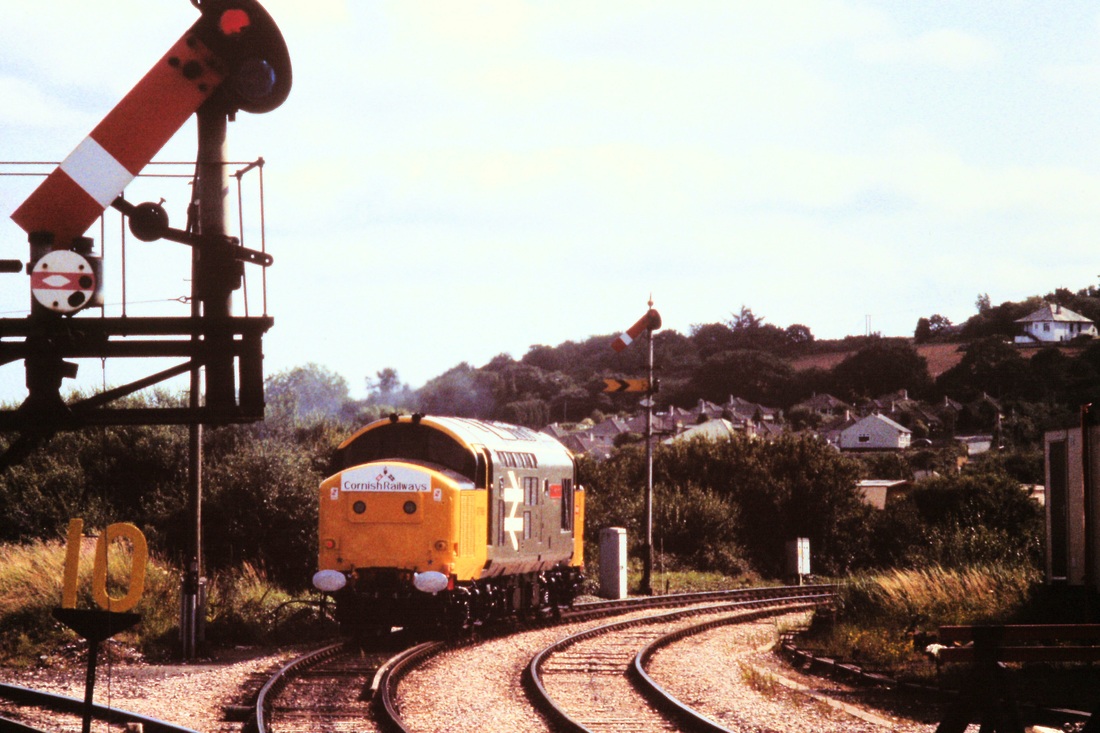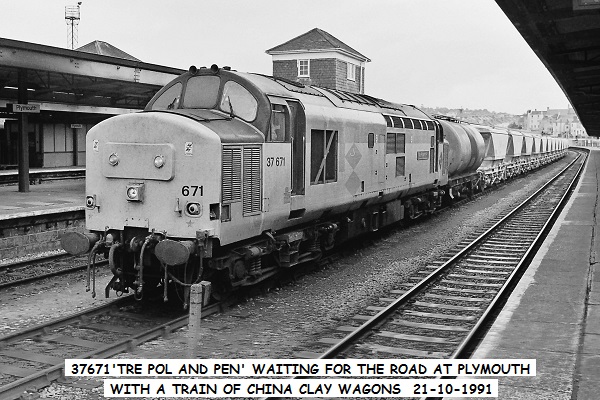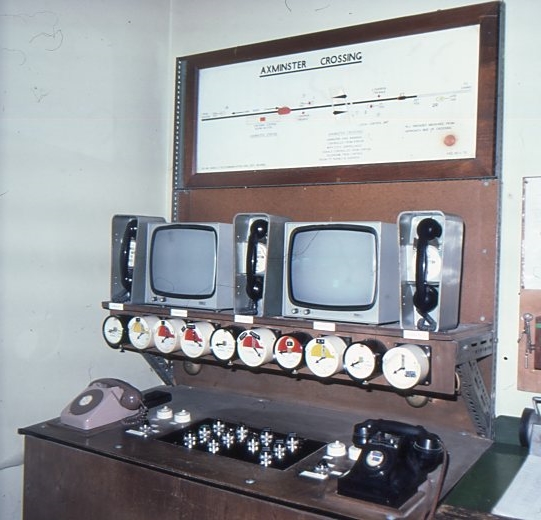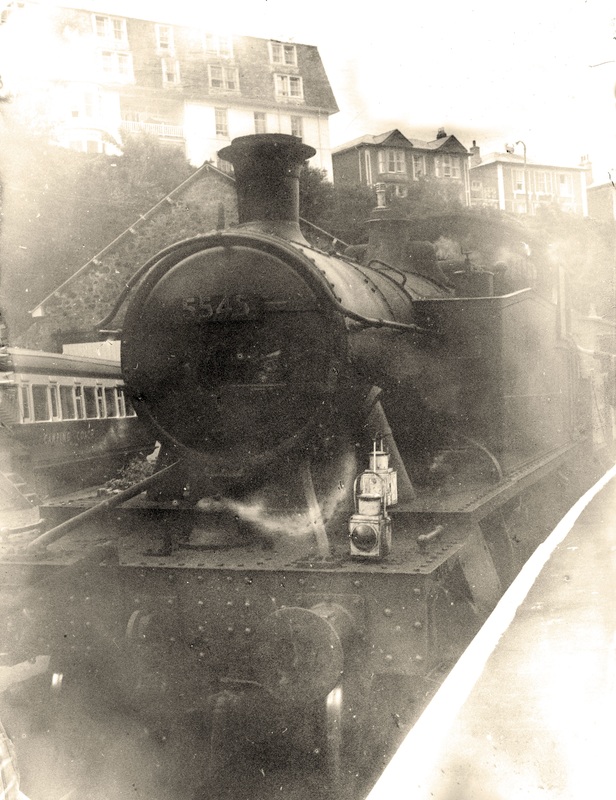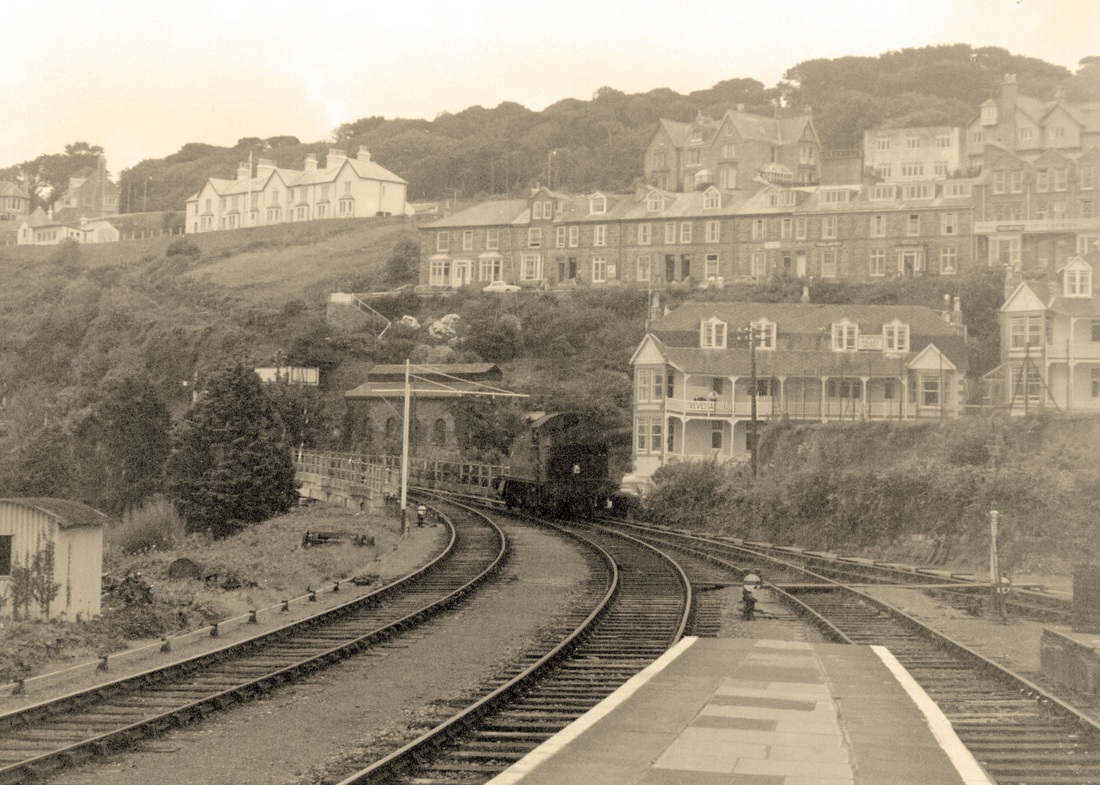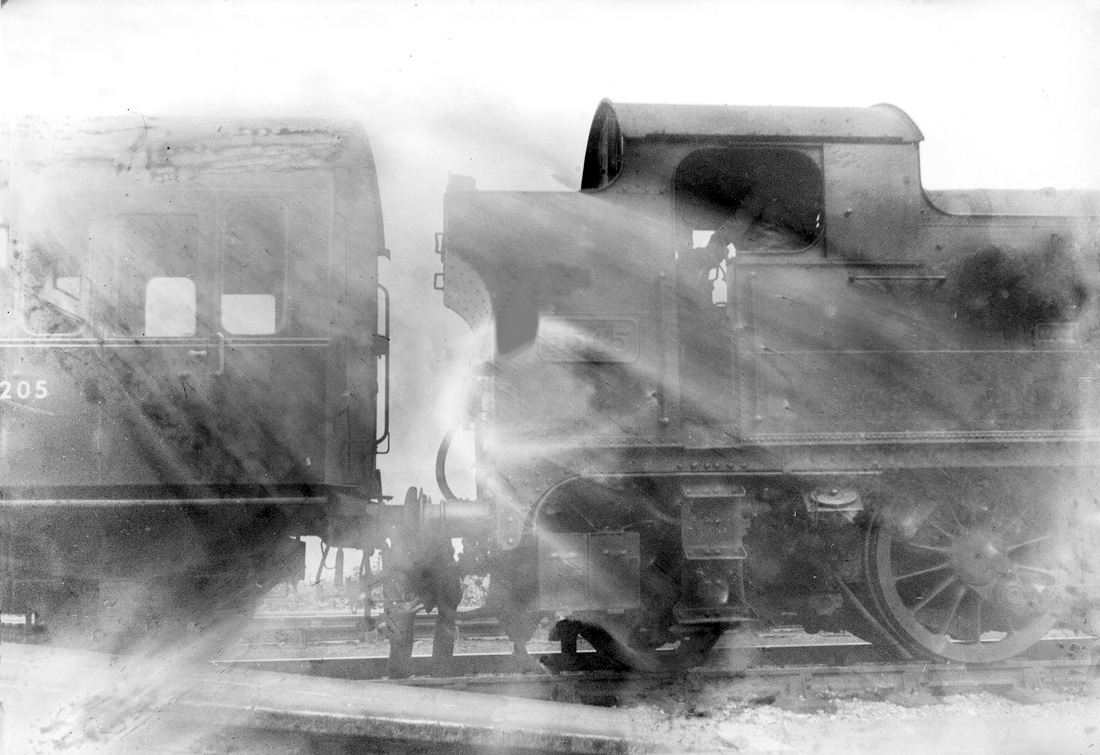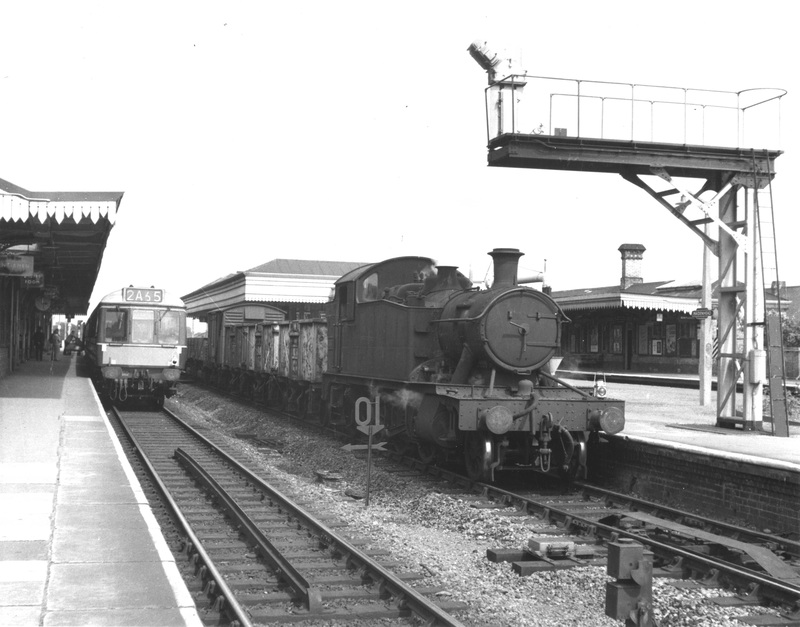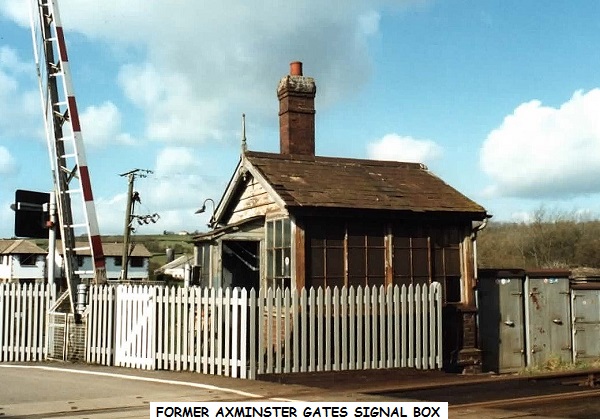The naming ceremony
Roger Winnen
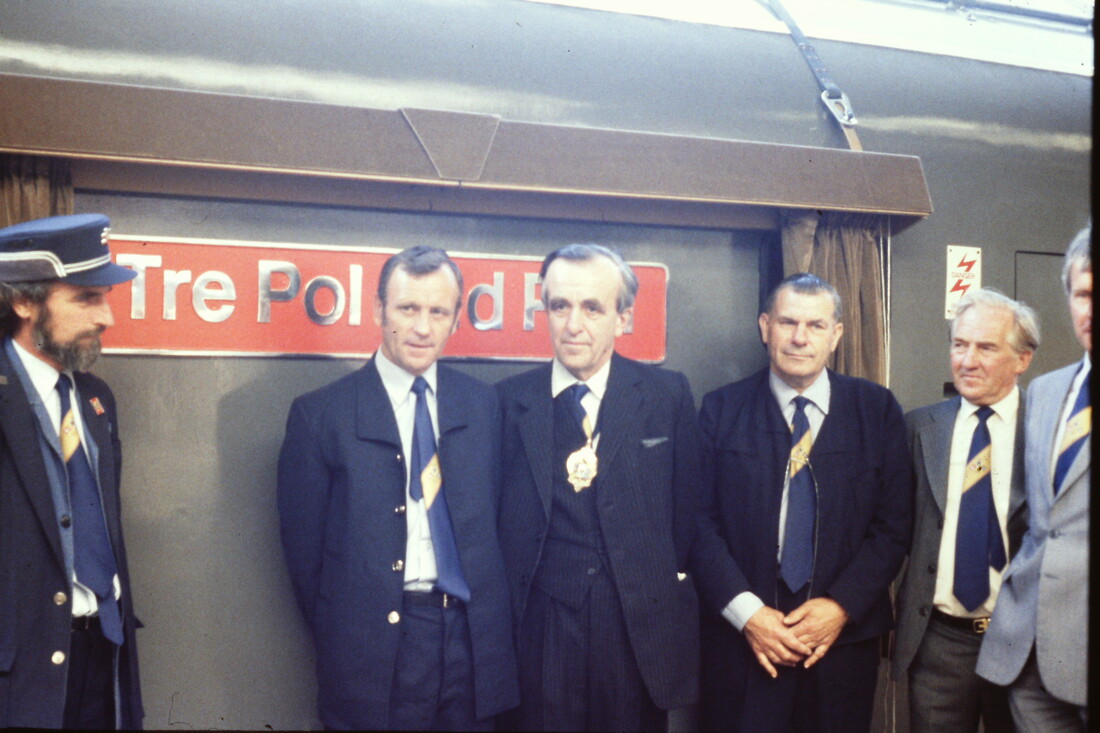
John Cornelius
More information
Chris Osment
My photo shows the control point in the station on 13th July 1984.
Regards, Chris
Laurence Hansford
I always understood that if everything was running to time, it was normal practice for the pair of 45s to draw the train straight onto the branch direct from Platform 1 (the Down Main). Don’t forget that back then St Erth was a double junction (if that is the right term). In other words the Branch could be accessed directly from either Main Line.
However it was a different matter if the down Riviera was running late or there was already a train on the Branch for some other reason. On a Summer Saturday there was so much traffic that neither Main platform could be left occupied by a waiting train so it was usual for the 45s to push the train forwards and into the Up Refuge siding at the West end of the station where they could wait in comfort until the Branch was clear. Not sure what they did with passengers who wanted to get on at St Erth, though.
With regard to the use of 9748, I have to admit I never saw it. As soon as I was able to recognise numbers the first thing that caught my eye was the splendid brass number plates on the side of the engines and I think this would have been in 1948. I wondered why the first two numbers were always the same but the last always different; my father wasn’t much help, he just said that the numbers were so that individual engines could be recognised. On the occasional shopping trips to Penzance (by train, of course) it didn’t take me long to notice that the first two numbers differed between different sorts of engines and came to the obvious conclusion. I was now on the look-out for engines at St Ives which didn’t have 4 & 5 as their first two numbers but none ever appeared. Indeed, right throughout the 1950s I never saw anything other than pure 45XXs at St Ives and it wasn’t for want of looking!
However, in the late fifties I did hear about the Cameo appearance of one of the ubiquitous pannier tanks at St Ives on 2 or 3 occasions during the day in school hours. I have been looking through my notes scribbled at the time and I recorded that 9763 worked during April 1962 when a D63XX broke down and that 5545 replaced a 45XX on the 5:30 pm on some days. Later, on the 23rd June 1962 I saw 5508 at St Ives and then 5545 again on the 3rd August. The last time I saw any steam loco at St Ives was a week later, on the 10th August, when 5545 reappeared yet again.
By the beginning of the 1960s it was obvious that steam wouldn’t last much longer in Cornwall and I would have liked to take some photos before it, and possibly the Branch, disappeared. All my father had was a pre-war Box Brownie which I soon found was next to useless for anything other than family snaps and anybody who was around at the time will recall that a good camera was mighty expensive – way beyond my pocket. My parents, like lots of people, were in the habit of visiting local auction salerooms (which in post-war Britain were in every town) and I used to go with them so I started to look for a second-hand camera. It was the same story; if it was nice, it was still a lot more than I could afford. However one day I spotted a pre-war German folding plate camera which took the smallest size of plates, 2½ x 3½ in. It was in pretty good condition and had a good lens and shutter so I bid for it and got it for the princely sum of 7/6, complete with six dark slides for the plates. Disappointment soon came when I discovered that a box of a dozen plates cost 6/6 and processing about the same so I determined to do my own developing. I got the chemicals from a Government Surplus yard in Hayle somewhere off Mellanear Road and used a couple of plastic sandwich boxes. As one can imagine without either experience, a light meter or a darkroom there was a good deal of trial and error before I was able to produce acceptable images and quite a few of the precious plates got wasted.
Well, the first proper use of my new acquisition happened to be on the 10th August 1962 so I did get 3 photos of 5545 but the quality is embarrassingly bad; the plates were under-exposed and nought out of ten for the developing (unless you appreciate finger streaks etc). Anyway, here they are as they do prove that 5545 did indeed visit St Ives. They were taken in the afternoon as she had been doing some shunting of goods wagons. The first shot shows her in the Bay Platform, the second going off to fill up with water and the third being coupled-up to the branch train.
As for the pannier tanks, although they had more adhesive weight and marginally more tractive effort, even thought they had the same size wheels they couldn’t match a 45XX or 55XX for either speed or stamina. After the end of steam in the West Country some of the 55XXs ended their days in the Thames Valley working up to Paddington, mostly on pick-up goods and parcels traffic. On several occasions I was lucky enough to see one hammering, flat out, through Maidenhead on a non-stop parcels train from Reading to Slough with 5 or 6 vehicles, at a truly astounding speed taking full advantage of Brunel’s Billiard Table. No pannier tank could do that!
And, yes it was usual to run passenger trains not only out of but also into the Bay Platform on Summer Saturdays – the platform edge wasn’t painted white just for appearances.
Oh, and here is also a shot of 55xx on a goods at Maidenhed waiting for the “right away”. Note that the points are set for the branch to Bourne End and High Wycombe. Like at St Erth, the connection from the Down Relief was taken out many years ago.
Cheers, Laurence.. Many thanks indeed Laurence. Your early efforts with a camera captured scenes that would otherwsie be lost and are much appreciated.
John Cornelius

